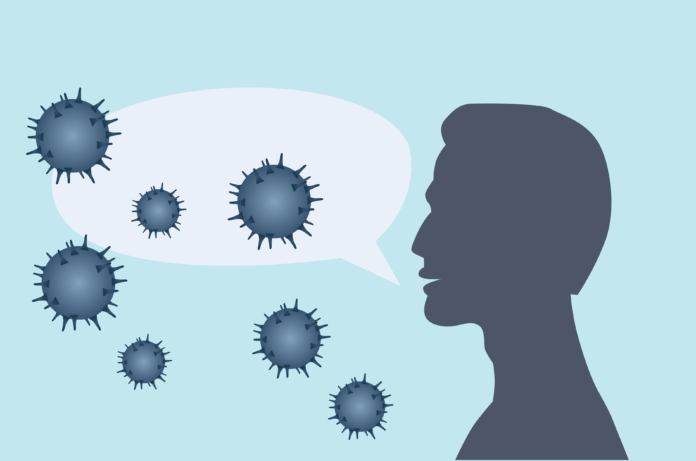Superemittors may be responsible for significant viral spreading
New research from UC Davis shows that certain speech patterns and key individuals, called superemittors, may be contributing to the spread of coronavirus more than previously thought, according to an editorial published in the Aerosol Science and Technology Journal on April 3.
“There are different [methods] of infectious disease transmission [such as] through direct contact with an infected individual or contact with infected surfaces which we call fomites,” said Sima Asadi, a chemical engineering doctorate candidate. “Another route of transmission is through air. [We call] this method airborne infectious disease transmission.”
Although previous research claims that COVID-19 is spread primarily through direct contact and inhalation of infectious aerosol particles that are sneezed and coughed into the air, research by Professor Ristenpart from the Department of Chemical Engineering indicates otherwise.
“It looks like SARS-CoV-2 is transmitted at least in part by aerosol particles, because there is quite a lot of evidence now for transmission from asymptomatic individuals, people who are not coughing or sneezing,” Ristenpart said.
“Asymptomatic and pre-symptomatic individuals, by definition, do not cough or sneeze to any appreciable extent,” according to the Aerosol Science and Technology article co-authored by Ristenpart and Asadi.
Their research suggests that these asymptomatic individuals are largely responsible for spreading the virus through their everyday speech patterns.
“I think something that a lot of people don’t realize is that when you breathe or when you speak, you are actually emitting a pretty large number of what’s known as expiratory aerosol particles,” Ristenpart said. “These are very tiny droplets. As soon as you exhale them, they evaporate and they form [infectious particles] that are about one micron in diameter. For contrast, a human hair is about 50-100 microns in diameter.”
One specific instance of such spreading occurred in Washington state during a choir rehearsal on March 6, according to Ristenpart. Here, where there were no known cases of coronavirus on the day of rehearsal, the significance of spreading occurring via asymptomatic individuals was clear due to the rate of infection after the rehearsal.
“About three weeks ago outside of Seattle, after [Washington] started enforcing social distancing, a choir practice in a small indoors environment sang for two hours and 45 out of 60 people there got infected,” Ristenpart said. “This indicates that the most likely method of transmission was via aerosols. Since singing is typically at a pretty loud volume, [the choir] would have been emitting a lot of aerosol particles in the air. Other people breathe in those particles, then it goes deep into their lungs and they get infected.”
While the topic of viral transmission via aerosol particles may be novel to some, Asadi began her research on viral aerosol transmission long before the outbreak.
“One thing that I noticed was that in literature, there were a lot of discrepancies between results,” Asadi said. “Some [papers concluded that] talking released more droplets than coughing and sneezing, and [other papers concluded that talking] was releasing less than those activities.”
“They were not very specific about the experiments that they were doing,” Asadi said. “With talking, for example, it was not clear how loud the participants were during those activities. In most of the papers, the only talking activity that they tried was counting from 1 to 100.”
In order to further investigate the role that asymptomatic individuals play in the spread of COVID-19, Ristenpart, Asadi and their colleagues elected to study the role of aerosol particles in infectious disease transmission in more detail.
The results of the experiment were unexpected and partially unexplained, and may serve to provide more information about the nature of transmission and infectious potential of COVID-19 in the near future.
“Surprisingly, we found that some individuals systematically release more droplets than others, and we called [these people] speech superemittors,” Asadi said.
Though researchers do not yet know what percentage of the general population are superemittors, Asadi found that approximately 5 out of the 40 people involved in her study appeared to be superemittors.
“For unclear reasons, there is some fraction of these individuals that emit a lot more particles than other people,” Ristenpart said. “There is no clear correlation with gender, body weight, or height [in superemittors]. The hypothesis is that, if there is an airborne disease transmission mechanism, people who are superemittors are emitting far more particles than others. They might be disproportionately responsible for super spreading.”
Although the specific biological processes responsible for superspreading and superemitting are not yet known, research supports the crucial role of practicing social distancing whether or not you believe that you are infected.
“I myself am a superemittor,” Asadi said. “When I am sick, I should be more careful to not infect other people.”
Written by: Dina Gallacher — science@theaggie.org




